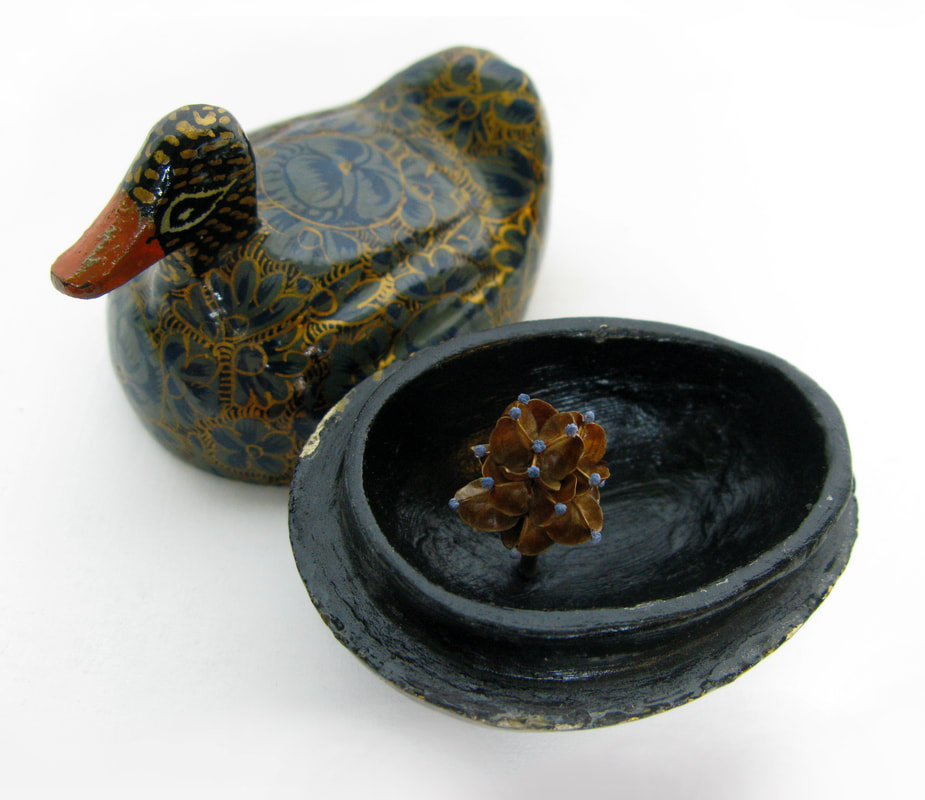When people ask what I do, I tell them I make flowers. I call them Frankenflora.
In Samuel Taylor Coleridge’s poem “What If You Slept,” a “strange and beautiful flower” is plucked from a dream in heaven and brought back to our waken world. Years after I first read this poem, after I volunteered at an herbarium, after I became fascinated with the mutability of orchids, after I lost my father, did I begin to understand just how strange and beautiful that flower was. In my grief, I was plunged into a frenzy of piecing together parts of dead flora to create—or replicate—Coleridge’s poetic flower.
I consult the study of botany, practice ikebana, and experiment with the concept of hybridization, using sections of pressed or dried plants to construct a flower, like Dr. Frankenstein and his monster. That hybrid speciation is more commonly found in plants than animals makes them the ideal media for this practice, so Frankenflora (with its variations given binomial names) may represent a species that is perhaps not altogether impossible.
We are born into this world the product of two genetic codes, but along the way we pick up bits of the people we love and bits of the things we marvel at, and in the end we leave as a whole greater than the sum of these parts. It is my hope that Frankenflora might be a balm for those who have also lost loved ones, that they might be a part of the departed to occupy the void left behind.
The Frankenflora won’t die again but they’re still fragile. In events of loss, we have to be gentle in remembering whole lives, and be careful not to forget them.
www.furiebeckite.com/
In Samuel Taylor Coleridge’s poem “What If You Slept,” a “strange and beautiful flower” is plucked from a dream in heaven and brought back to our waken world. Years after I first read this poem, after I volunteered at an herbarium, after I became fascinated with the mutability of orchids, after I lost my father, did I begin to understand just how strange and beautiful that flower was. In my grief, I was plunged into a frenzy of piecing together parts of dead flora to create—or replicate—Coleridge’s poetic flower.
I consult the study of botany, practice ikebana, and experiment with the concept of hybridization, using sections of pressed or dried plants to construct a flower, like Dr. Frankenstein and his monster. That hybrid speciation is more commonly found in plants than animals makes them the ideal media for this practice, so Frankenflora (with its variations given binomial names) may represent a species that is perhaps not altogether impossible.
We are born into this world the product of two genetic codes, but along the way we pick up bits of the people we love and bits of the things we marvel at, and in the end we leave as a whole greater than the sum of these parts. It is my hope that Frankenflora might be a balm for those who have also lost loved ones, that they might be a part of the departed to occupy the void left behind.
The Frankenflora won’t die again but they’re still fragile. In events of loss, we have to be gentle in remembering whole lives, and be careful not to forget them.
www.furiebeckite.com/



 RSS Feed
RSS Feed
